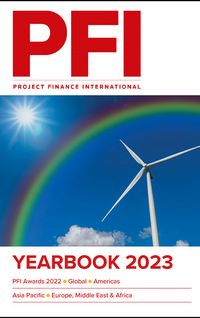The Inflation Reduction Act does not address a fundamental issue long facing energy infrastructure projects – the burdensome and unpredictable permitting process and myriad opportunities for project obstruction by environmental and other groups. By Brandon Tuck, counsel, and Simon Willis, associate, Vinson & Elkins’ Environmental and Natural Resources practice in Houston.
The Inflation Reduction Act (IRA) has been billed as the single largest investment in climate and energy in American history, dedicating billions of dollars to clean energy-related loan programmes, extending and expanding production and investment tax credits for renewable energy projects, and allocating hundreds of millions to various federal agencies to hire and train staff to support environmental review.1 As a budgetary measure, though, the IRA does not address a fundamental issue of the permitting process.
The solution is bipartisan permit reform. Without it, continued growth in domestic renewable energy may be unsustainable. Over the past 20 years, domestic renewable energy has been the fastest-growing energy source on the grid. Jumping 90% from 2000 to 2020, renewable sources now make up nearly 20% of utility-scale electric generation and nearly 5% of the total energy consumed in the United States.2
This trend is to likely to continue, with renewables growing to 35% of domestic electric power generation by 2030.3 Transmission systems may need to expand by 60% this decade to accommodate this growth, and without it, the US may not be able to meet the Biden administration’s ambitious decarbonisation goals, including achieving net-zero carbon emissions by 2050.4 Put simply, pouring billions into tax incentives and other energy transition programmes does not protect those investments from the same programme inefficiencies and legal impediments that have stymied other energy development projects.
Permit reform is a key that may unlock the full potential of the billions earmarked in the IRA for energy infrastructure growth. Democrats and Republicans have introduced several competing bills to address permit reform, but there has been no consensus. Some factions worry that streamlining environmental reviews might help projects they disfavour or disrupt the balance between state and federal decision-making. Until permit reform happens, however, the returns on IRA investments may be much lower than forecast.
At risk of withering on the vine
A survey of recent and current major energy projects illustrates how project opposition techniques are stymying a variety of energy infrastructure projects. Opposition to oil and gas projects such as the Keystone XL and Dakota Access pipelines and liquefied natural gas export projects is well documented. But they are not alone. Efforts to expand the electric transmission grid have also faced years of opposition and litigation, not only from local interests seeking to avoid projects being sited in their communities, but also from national environmental organisations that viewed any high-voltage grid expansion as facilitating additional coal and nuclear energy. Their success in blocking the build-out of the grid now doubly haunts the energy transition – many potentially helpful past projects failed to be launched, and the same playbook of challenges to permitting and siting decisions under environmental laws is now being turned against energy transition projects.
Friction over transmission line siting in New England demonstrates that even when there is a plentiful source of carbon-free electricity, getting the power to the end-users can be highly contentious. Recently, residents of Maine voted to ban a previously approved transmission line, the New England Clean Energy Connect project, that would link Massachusetts with hydropower generated in Quebec and aid Massachusetts in meeting its own renewable portfolio standards.
Certain environmentalist groups, Native American tribes, and natural gas and nuclear operators ran successful opposition campaigns, arguing that Maine would bear environmental burdens while the project’s benefits would flow to Massachusetts. Construction is currently at a standstill as the courts consider whether the referendum unconstitutionally stripped the developer of vested rights. A similar controversy played out in New Hampshire over the Northern Pass transmission line project, which would have delivered Canadian hydropower to New England but met its demise after nearly a decade of environmental review and organised opposition.
Offshore wind development has faced the same headwinds. The Cape Wind project in Nantucket Sound ultimately fell after many years of agency review and organised opposition. Offshore wind projects even farther offshore, such as Vineyard Wind and South Fork Wind, continue to face legal challenges. Opponents challenge the agencies’ decision-making under laws designed to address the environmental review process (such as compliance with procedures under the National Environmental Policy Act, or NEPA), air and water pollution, and protection of endangered species and cultural resources.
Many of the most recent challenges to offshore renewable energy infrastructure have come from (1) local landowners concerned about impacts to aesthetic, recreational, or property values; (2) Native American tribes concerned with inadequate consultation or damage to cultural resources; (3) the commercial fishing and seafood industries concerned about offshore projects interfering with their commercial operations; and (4) competing energy producers, often onshore solar, natural gas, and nuclear generators.
Project opponents do not need to win their legal battles to win their war. Uncertainty and delay alone can disrupt capital markets and project financing. Sometimes, even a slight delay can cost enormous sums or impair construction logistics, such as when a project is delayed by a year for missing narrow work windows required to protect species. Delays and forced changes to designs can nudge a project closer to economic infeasibility. One analysis looked at 53 renewable energy projects facing opposition and found that almost half were ultimately cancelled in full.5 The IRA does little to address these permitting weaknesses.
Permit reform offers some hope
One permit reform bill of 2022 came from West Virginia Senator Joe Manchin. Among many measures, his bill would impose stricter time limits for permit challenges and strengthen federal backstop siting authority for transmission lines in the face of state opposition.6 Although many of the bill’s provisions might typically have drawn bipartisan support, Senator Manchin has not, at least to-date, found it from Republicans unhappy with the IRA or from several in his own party who disagreed with his all-of-the-above approach to energy security that would have aided conventional energy projects alongside offshore wind, solar, and hydrogen projects.
The Republican counterproposal would go even farther than Manchin’s bill and, among other measures, codify several streamlining provisions initially rolled out in the Trump administration’s update of NEPA regulations.7 Unless Congress takes action on these or similar bills, the billions of dollars dedicated to promoting clean energy projects under the IRA are unlikely to reach their full potential.
The effectiveness of proposed reform measures varies. One approach in the proposed bills would fund programmes to support interagency collaboration; another would set time limits for environmental reviews. For example, the IRA allocates US$350m to the Federal Permitting Improvement Steering Council, an entity created to streamline the permitting process for certain infrastructure projects under a programme known as FAST-41.8
Manchin’s bill would build on this programme to expedite the review of projects designated as strategically important, with NEPA reviews limited to one to two years, depending on complexity. But these scheduling goals are aspirational: agencies could extend their reviews for good cause or to comply with other statutory requirements, and project developers would lack any enforcement mechanism to compel government action. FAST-41 itself has not resulted in shorter review periods. A review of the average number of days from application to approval for new liquefied natural gas export terminals over the last decade is just over 900 days outside of FAST-41, compared with an average of 1,227 days within the programme; for interstate gas pipeline projects, permitting within the programme since 2018 has taken 473 days from filing to order, compared with 758 days in FAST-41.
Other measures are more likely to yield benefits. Manchin’s bill would limit the time opponents have to challenge federal actions – eg, water discharge permits, authorisations to cross federal lands, mandatory consultations for protected species or cultural resources. Currently, the Administrative Procedure Act provides a six-year statute of limitations to challenge an agency decision (absent another statute specifying a different time period). Manchin’s bill would require lawsuits be filed within 150 days, allowing project developers to know the range of challenges being brought relatively promptly.
Targeted fixes to transmission siting
Transmission siting hurdles must also be fixed to unlock the investment potential of IRA projects. As seen in the Maine and New Hampshire transmission examples, states are not always friendly to interstate transmission projects, particularly those designed to primarily serve customers in other states. A similar problem is emerging for offshore wind, given the limited number of potential points to interconnect offshore projects with the onshore grid. The current federal approach to solving the interstate transmission conundrum has been to give the Federal Energy Regulatory Commission siting authority to overrule state objection for facilities in certain designated corridors.9
Unfortunately, this backstop siting authority has a fatal flaw: the eminent domain authority it grants cannot be exercised over state lands.10 Because states own the bottoms of all navigable waters within their boundaries, it is practically impossible to construct a high-voltage transmission line of any significant length without crossing state-owned lands. Manchin’s bill included a measure to plug this gap, extending eminent domain authority over state lands. If that or a similar measure became law, the mere availability of this authority might reduce some of the siting impediments at the state level.
Conclusion
The IRA invests significant resources in incentives and support for renewable energy projects. The White House Office of Management and Budget has estimated that the IRA’s investments put the United States on track for a 40% emissions reduction below 2005 levels by 2030.11 However, these benefits cannot be realised without the successful development of the infrastructure and other projects that the laws are intended to incentivise. The IRA does little to address the immense hurdles many of those projects face; permit reform legislation is needed to effectively promote the energy transition.
Footnotes
1 - US DOE, Inflation Reduction Act of 2022: Loan Programs Office, available at https://www.energy.gov/lpo/inflation-reduction-act-2022.
2 - Center for Climate and Energy Solutions, Renewable Energy, available at https://www.c2es.org/content/renewable-energy/.
3 - US, EIA, Annual Energy Outlook 2022 (Mar. 3. 2022), available at https://www.eia.gov/outlooks/aeo/.
4 - US DOE, DOE Launches New Initiative From President Biden’s Bipartisan Infrastructure Law to Modernize National Grid (Jan. 12, 2022), available at https://www.energy.gov/oe/articles/doe-launches-new-initiative-president-bidens-bipartisan-infrastructure-law-modernize.
5 - Lawrence Susskind et al, Sources of opposition to renewable energy projects in the United States, 165 Energy Policy 112922 (2022).
6 - Energy Independence and Security Act of 2022 (draft text released Sept. 21, 2022), available at https://www.energy.senate.gov/services/files/EAB527DC-FA23-4BA9-B3C6-6AB108626F02 (hereinafter EISA 2022).
7 - SB 4815, § 2, introduced September 12, 2022.
8 - Pub. L. 117-169, August 16, 2022, § 70007; see also FPISC, Congress Passes Inflation Reduction Act, August 12, 2022, available at https://www.permits.performance.gov/fpisc-content/congress-passes-inflation-reduction-act.
9 - 16 USC § 824p(b).
10 - 16 USC § 824p(e)(1).
11 - Candace Vahlsing, New OMB Analysis: The Inflation Reduction Act Will Significantly Cut the Social Costs of Climate Change (August 23, 2022), available at https://www.whitehouse.gov/omb/briefing-room/2022/08/23/new-omb-analysis-the-inflation-reduction-act-will-significantly-cut-the-social-costs-of-climate-change.
To see the digital version of this report, please click here
To purchase printed copies or a PDF of this report, please email leonie.welss@lseg.com

















